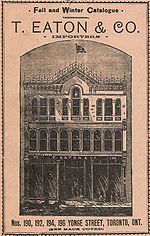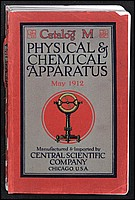Mail order

Mail order is a term which describes the buying of goods or services by mail delivery. The buyer places an order for the desired products with the merchant through some remote method such as through a telephone call. Then, the products are delivered to the customer. The products are typically delivered directly to an address supplied by the customer, such as a home address, but occasionally the orders are delivered to a nearby retail location for the customer to pick up. Some merchants also allow the goods to be shipped directly to a third party consumer, which is an effective way to send a gift to an out-of-town recipient.
A mail-order catalog is a publication containing a list of general merchandise from a company. Companies who publish and operate mail-order catalogs are referred to as catalogers within the industry. Catalogers buy or manufacture goods then market those goods to prospects (prospective customers). Many catalogers, just as with most retailers, are increasingly buying goods from China. Catalogers "rent" names from list brokers or cooperative databases. The catalog itself is published in a similar fashion as any magazine publication and distributed through a variety of means, usually via a postal service and the internet.
Sometimes supermarket products do mail-order promotions where people can send in the UPC code plus shipping and handling to get a product made especially for the company.
Mail order in the United States
According to the National Mail Order Association (NMOA.org) Benjamin Franklin is believed to have been the first cataloger in the United States. In 1744, he formulated the basic mail-order concept when he produced the first catalog, which sold scientific and academic books. He is also credited with offering the first mail-order guarantee: "Those persons who live remote, by sending their orders and money to B. Franklin may depend on the same justice as if present."
The earliest surviving mail-order business, now known as Hammacher Schlemmer, was established by Alfred Hammacher in New York City in 1848. Offering mechanic's tools and builder's hardware, its first catalog was published in 1881. [1] Now known for offering an eclectic, premium assortment of "The Best, The Only, and The Unexpected", it is America's longest running catalog.
In 1872, Aaron Montgomery Ward produced the first mail-order catalog for his Montgomery Ward mail order business. This first catalog was a single sheet of paper with a price list, 8 by 12 inches, showing the merchandise for sale and ordering instructions. Montgomery Ward identified a market of merchant-wary farmers in the Midwest. Within two decades, his single-page list of products grew into a 540-page illustrated book selling over 20,000 items. Another early mail-order catalog was published in 1884 by the Eaton's department store in Toronto, Canada. Almost a decade later, the first Sears catalog was published in the United States. CENCO dominated the field of selling science education equipment through their mail-order catalog.
Other mail order catalogs include JC Penney, The Noble Collection, Wal-Mart, Spiegel catalog, Welco.

With the invention of the Internet, a company's website became the more usual way to order merchandise for delivery by mail, although the term "mail order" is not always used to describe the ordering of goods over the Internet. It is more usual to refer to this as e-commerce or online shopping. Nowadays however most traditional mail order companies also sell over the internet, which makes these two varieties to merge.
In the United States, an advantage of this type of shopping is that the merchant is typically not required by law to add sales tax to the price of the goods, unless they have a physical presence in the customers' state. Instead, most states require the resident purchaser to pay applicable taxes. There has been periodic discussion about amending the law to make these sales taxable.
In the European Union, the EU VAT union has the principle that the merchant adds the VAT of his own country to the price, and the buyer does not have pay any more tax. If the buyer is a company it deducts that VAT like inside its own country. This makes the EU look more like one country than the US in this respect.
